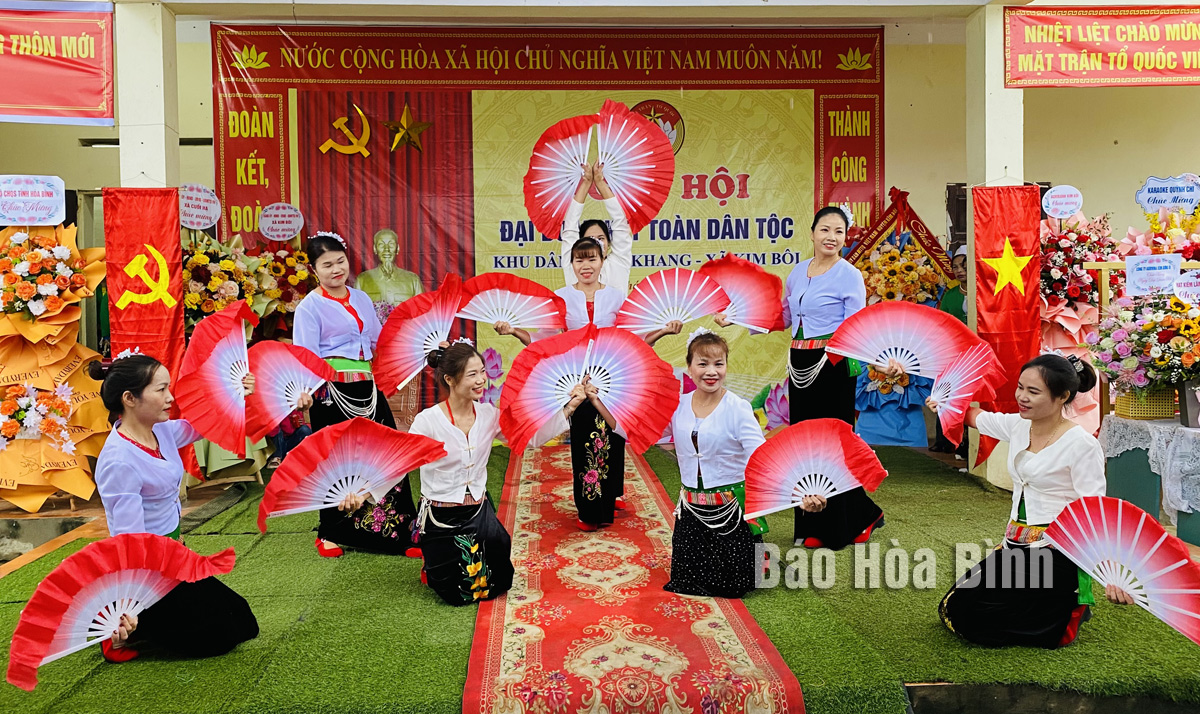In responding to the movement of "All people stay united to build cultural lifestyle”, over the years, Kim Boi district has conducted many practical and effective activities to promote solidarity and mutual support among the local community in sustainable poverty reduction and building cultural lifestyle and a healthy cultural environment, and maintaining national cultural identity.
The
art troupe of Vo Khang commune in Kim Boi district performs at the great
national solidarity festival in 2023.
Annually, the district’s Culture-Information division gives advice to the local
People’s Committee to issue plans to implement the "All people unit to build
cultural lifestyle” movement with specific contents and tasks for particular
sectors, areas, and locality in association with socio-economic development and
new-style rural area building activities.
Bui Van Hiep, Vice Director of the division, said that along with engaging in
building projects, mechanisms and policies in building cultural lifestyle at
the grassroots level, the office has strengthened communications to enhance
public awareness of building families of culture, villages, communes, and
agencies of culture.
It has also renovated the methods of organising and implementing emulation movements
as well as campaigns and contests in building cultural lifestyle to spread good
values in the community, he said.
Last year, Kim Boi saw 23,848 families recognised as families of culture,
reaching 84% of the target, along with 154 out of the 158 residential areas
completing standards in culture. At the same time, 70 cultural residential
areas winning the title for five consecutive years and 10 residential areas
with the title of outstanding cultural area for five years in a row were
honored by the district’s People’s Committee.
The system of cultural institutions has received adequate investment to meet
the people's needs for cultural enjoyment, while cultural, art and sports
movements have been developed widely, creating a colourful cultural panorama,
contributing to preserving and promoting the traditional cultural values of
local ethnic groups.
Bui Huy Phong, Vice Chairman of the People’ Committee of Kim Boi commune, said
that the locality has created favourable conditions for locals to access knowledge
in economic development, building happy families and law understanding in
association with building cultural lifestyle and promoting the national pride,
thus encouraging them to preserve the local cultural values. So far, 100% of
the residential areas in the commune have met criteria in culture.
Bui Quang Thanh, Secretary of the Party Cell of Vo Khang village of Kim Boi
commune, said that thanks to villagers’ efforts and solidarity in engaging in
activities launched by the village and commune, the commune has been recognised
as a cultural residential area for many years.
Along with actively responding to the movement to develop a cultural lifestyle,
local residents in the district have also engaged in other campaigns such as
that of "All people do physical exercise following Uncle Ho’s example” and "All
people stay united to build new-style rural areas, civilised urban areas”.
These results are motivations for Kim Boi to continue promoting its creativity
to build a healthy cultural environment from families, schools, agencies,
units, and community, ensuring that culture is a driving force for local
socio-economic development.



